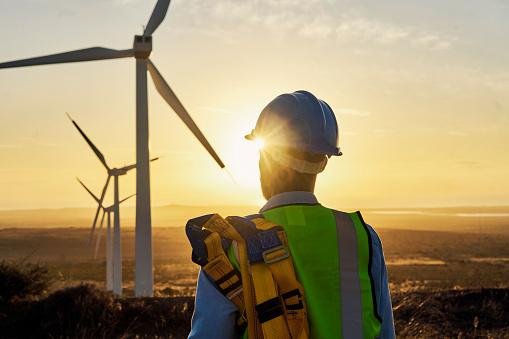Solar and wind power are increasingly used as a way to replace resources that affect the environment, however, there is still a big challenge for these formats: network storage capacity. Record breaking adoption of these fonts in 2022, with a total of 12% of the energy obtained from sustainable energy production.
Storage capacity is still not a huge hurdle for humanity, but as more and more people and companies start using green energy, network capacity could become a major issue.
What is the storage capacity?
A utility provides the ideal electricity to power a city, meeting the current demand of each customer and understanding their usage needs during the daily, weekly or annual cycle. Unfortunately, it is not possible to do the same with green energy at the moment.
This is where the network capacity problem begins. because wind and solar energy do not have a controlled energy source as is possible with the electricity already produced.. Sustainable energy networks cannot feed the electricity grid at peak times, so they cannot supply a city with electricity 24 hours a day.
Theoretically, it is possible to solve this problem by using batteries to store excess energy and provide it during peak hours. However, this solution may cause other problems. In addition to the financial aspect, there are also concerns about the environmental impact from the use of these batteries, as building a sustainable energy storage hub with batteries can be quite costly.
To manufacture batteries, it is necessary to extract the materials commonly used in battery cells, lithium, cobalt and nickel. The problem is that refining these materials is responsible for generating toxic waste and contributing to deforestation and habitat destruction in mining areas.
There are a few other issues that make batteries unsuitable options, as their manufacture releases greenhouse gases into the atmosphere and disposal can pollute the environment with toxic products. So, using a sustainable energy environment in a format that continues to attack nature – to heal on the one hand and harm on the other – will make no sense.
Alternatives to overcome the challenge
Although it is a big problem, there are solutions that could offer another conclusion to this story, with dozens of experts around the world already working to find possible solutions. Here are some of the options that can help you overcome the network capacity issue:
- (V2G) grid allows electric cars to be used as energy storage;
- Compressed air/gas storage stores air or gas in a container to generate electricity and can also be an option as it is relatively inexpensive and can be used on a large scale;
- Thermal energy storage, which stores heat in a material to generate electricity, is a particularly useful technique in solar power plants;
- Gravity storage, which stores energy by lifting heavy objects, is relatively inexpensive but cannot be used on a large scale.
- Some battery manufacturing processes are inevitably harmful to the environment, but no worse than the use of fossil fuels. Therefore, one option is to use other processes that emit reduced amounts of carbon into the atmosphere.
Anyway, it is important to note that the subject is still being researched by scientists around the world in search of solutions to overcome the challenge.
Source: Tec Mundo
I’m Blaine Morgan, an experienced journalist and writer with over 8 years of experience in the tech industry. My expertise lies in writing about technology news and trends, covering everything from cutting-edge gadgets to emerging software developments. I’ve written for several leading publications including Gadget Onus where I am an author.













